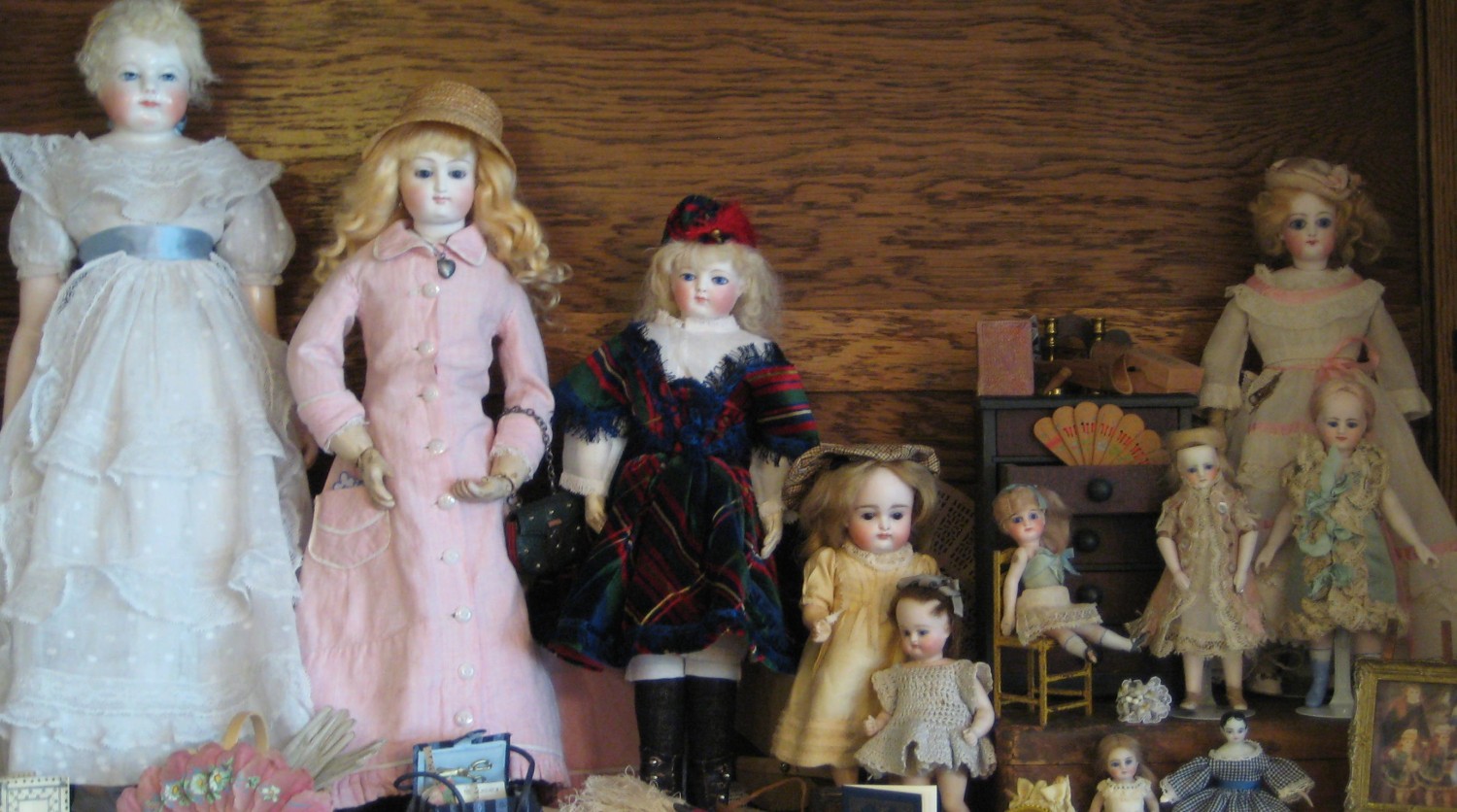Today, I’ll show you how I decorated my doll’s dress, then share some ideas for how to finish yours. I am going to use lace and metallic trim.
When I added the lace to the slip I found the right side of the lace. Well, if your lace has a directional pattern like mine, you don’t have to analyze it again each time you use it. Just compare the pattern to the lace on the slip and make sure it’s going the same direction.
First, I sewed lace to the armholes to form sleeves. If you look at old dresses of this type, you’ll find that almost all of them have lace around the sleeve openings, no matter what other trim they have.
I attached the lace with off-white thread, just like on the bottom of the slip, starting and ending at the underarm seam. Always match your thread to the lace, not the dress, for the best look.
I did not gather the lace, but sewed it on flat.
This is how the completed sleeves look.
You may want to use gathered lace on your dress. Even when applying flat lace, you need to know how to gather it at the corners and curved areas so that it will lie flat. To gather old or new french cotton lace, just pull one of the threads in the flat header of the lace.
I decided to stitch lace all around the outside edges of the dress, so I started at the center back neck. On most dolls, this joining will be hidden under the wig. Gather the lace slightly around the curves on the front, just enough so that it will lie flat.
At the corners, pull up and stitch gathers starting about 1/4″ from the corner. Stitch to the corner, then stitch and gather about another 1/4″ on the other side.
This is how it will look when the lace is turned to the right side. It lies flat and doesn’t pucker or pull. Continue stitching all around the dress.
My love of using bits of old lace and my obsession with having matching lace on the undies, slip and dress doesn’t make things easy.
This is how much lace I have left over.
Next, I sewed on the metallic trim, lining it up with the outer edges. I used my fray preventer on the end and let it dry before I cut it so that it wouldn’t ravel. I turned under a small bit, then stitched it on with the blue thread, through the blue stitching on the trim. I started it on the right bottom edge.
I did not run the lace all around, but stopped just below the curve on the right side. This side will be hidden when the other side overlaps it. If I was very short on lace, I could have ended it here as well.
I tried the dress on my doll and decided that I’d need 2 hooks to close it. I placed pins where I wanted the hooks to be sewn. I sewed them onto the lining and dress turn-back, not through to the right side. I didn’t want my stitches to show on the front.
I stitched a couple of stitches through the hook part to keep it flat.
Hooks usually come with loops or bars. For this dress, I used the bars. I put the dress back on my doll and again put pins in for placement of the bars.
The hooks I used are antique. Until just after 1900, metal hooks were made with two bars. Modern hooks have three bars and come in black or silver. I like using tiny hooks, but the old dresses I have found on all bisques have mostly had big ones.
My dress is done.
She can wear it with the lace around the neck up or down.
But, I gotta do something about her wig…
Anyway, here are a few alternate ideas for finishing your dress.
This antique dress is trimmed with big lace that was sewn to the inside, then wrapped around the edges and tacked to the outside. It closes with ribbon ties. I removed her wig to show you the back. See the darts that were sewn to make the dress fit her better.
Although this beautiful dress came on this doll, it is a very good reproduction. Like many antique mignonette dresses, it does not have a front closure at all. It can be pinned. The edges are trimmed with two different laces and the front is decorated with tiny buttons.
Since we changed computers after a crash last year, I lost several months of pictures, some of them of dolls I sold on eBay. I was thrilled, yesterday, to find the following pictures on Pinterest.
I made a box and trousseau with two dresses for this Simon & Halbig doll. This dress is decorated with embroidery which I stitched before I cut out the dress. It has organza sleeves edged with hand-sewn scallops and closes with a ribbon tie.
The second dress was cut short, then I sewed on an scalloped organza skirt. It has lace sleeves and closes with hooks and thread loops.
Do some research of your own before deciding how to trim your dress. Look at doll shows, in doll magazines and online at auction sites, places like Ruby Lane or on Pinterest. Be creative, but use antique costumes as a starting point.
I would love to see pictures of your creations, so please share.
























